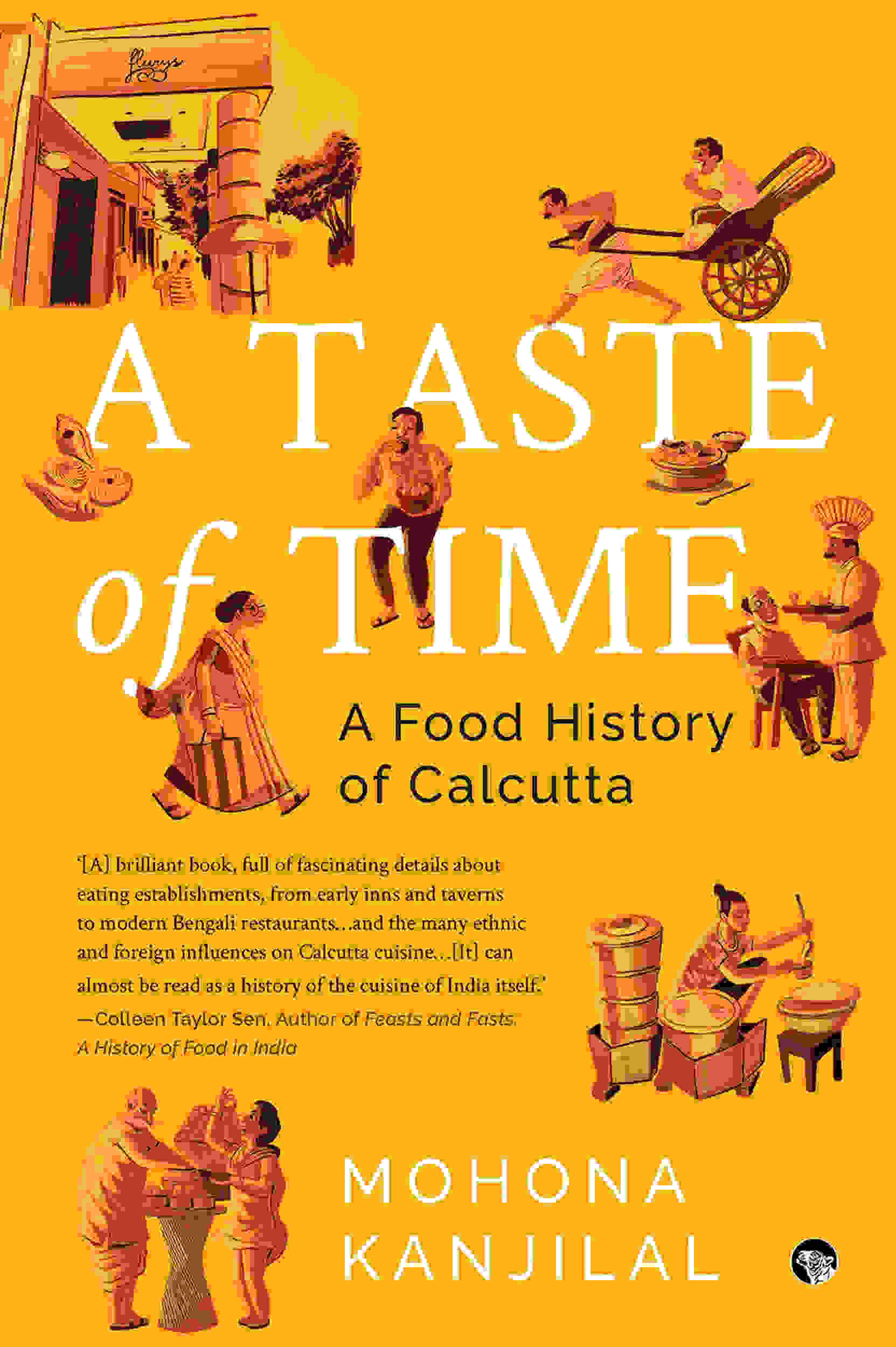Book: A taste of time: A food history of Calcutta
Author: Mohona Kanjilal
Publisher: Speaking Tiger
Price: Rs 899
If you want to read a book about Calcutta that takes you to the vignettes and the history surrounding your favourite dishes and eateries, if you want to hear stories about which famous personality (think Subhas Chandra Bose) ate what and where, and if you want to repeat those experiences for yourself, then this is the book for you.
In A Taste of Time: A Food History of Calcutta, Mohona Kanjilal weaves scholarly accounts of historians and food writers with the everyday fables you hear from a famous paanwallah or an old-timer of a club. “Food,” she says, “has always been an integral part of the lifestyle of the residents of Calcutta... whether it is... the phuchka wallah... the jhal muri wallah, selling the spicy puffed rice preparation... or the ghugni wallah, serving... the semi-dry and spicy preparation of whole yellow peas...”
As the capital of British India (1858-1911), Calcutta became a culinary melting pot of Armenians and Parsis from Iran, Jews from Syria and Baghdad, the Chinese fleeing their revolution, and local migrants such as Gujaratis, Punjabis, Marwaris, Sindhis, Oriyas, Biharis and South Indians. Her book explores this culinary evolution across a variety of cuisines and time periods. She structures the book according to when these migrants figured in the city’s consciousness. It is divided into four sections, with each section taking up the culinary influence of a particular set of migrants and the dishes they influenced in a Bengali household’s repertoire.
It begins with the chops, cutlets, puddings and the confectionery of the British, the Portuguese, and the Anglo-Indians, and traces the evolution of taverns and punch houses in Calcutta. Then come other expatriate communities and Awadhi and Mughlai cuisine’s mark on local dishes. The third section explores the lineage of iconic Bengali dishes and their offbeat treatment by the city’s prominent (bonedi) families. The first part of the concluding section is about Indian migrants (Gujaratis, Marwaris, Oriyas and South Indians) who hold fast to their own cuisines, while the second part focuses on immigrants from the hills of Darjeeling district who have made Calcutta their home and whose cuisine has become the most popular one in the city after Independence.
What comes through vividly in Kanjilal’s book is that Bengali cuisine is a hybrid of these influences. Bengali chops are actually schnitzels coated in a marinade of oil, salt, ground black pepper, garlic and herbs and then broiled or pan-fried, and eaten with kasundi (the Bengali version of mustard sauce, a spicy paste of mustard seeds, raw mangoes and mustard oil).
In India, multiple centuries coexist and collide. When you arrive in a new place, you want to eat the dishes locals adore at the place they frequent, and by doing so, you get a glimpse of what it is like to live there, to belong there. What Kanjilal excels in is giving us a sense of a dish’s or a drink’s historical and geographical presence in present-day Calcutta. One of the iconic drinks at Paramount (then called Paradise), established in 1918, a venue for freedom fighters, is Daab Sharbat. Its recipe was given to the owner by Acharya Prafulla Chandra Ray, the Father of Indian Chemistry. It is a juice made of the water of a green coconut, the tender sweet pulp and a mysterious essence. The book is peppered with many such vignettes, which weave together a sense of history, a sense of place, a sense of taste, and a sense of personality.

A taste of time: A food history of Calcutta by Mohona Kanjilal, Speaking Tiger, Rs 899 Amazon
It is impossible to do justice to all the sections of the book, so let me highlight a couple points for a sequel to this book. One is the concept of Bengali tastes, and how they changed over time as they encountered expat and local migrants. The Europeans and British influenced breakfast with the appearance of juices, tea and coffee, and preparations of egg, sausage, bacon and bread on the Bengali table. Chops, cutlets and egg-based puddings, too, became part of their diet. I would have liked to know more about which class of Bengalis adopted these habits, and when and why. For instance, in Culinary Culture in Colonial India, Utsa Ray highlights the fissures — between upper and lower castes, between Hindu and Muslim, between upper and lower classes — that characterized the Bengali middle class.
A related point concerns the local adaptations of foreign drinks and dishes. While giving us a snapshot of how tea was adopted and adapted locally, she says that it wasn’t clear why locals added milk to the tea. But other research shows that for any new ingredient, one has to ask: what does it resemble? What does it taste like? What does it replace? Perhaps it was because the locals, who were used to drinking milk, added it to tea to make the taste familiar. So it would be interesting to explore why some ingredients were added in the Bengalization of these foreign dishes.
Which brings up the question of why some migrants influenced Bengali cuisine more than others. Parsi, Greek, Marwaris, Gujaratis and South Indians did not influence Bengali cuisine or mingle with them, but the Europeans (who also did not mingle with locals) and Darjeeling district immigrants (who mingled) did. Others — like Armenians — adopted the local cuisine. It would be interesting to examine the reasons for these divergences.
A great way to have reviewed this book would have been to sample the fare in the places she writes about. I would begin by having breakfast at one of the old clubs, then mid-morning tea at Table Number Four (where Bose sat) in Favourite Cabin, followed by a lunch of fowl cutlet at Chacha’s Hotel or Kabiraji Cutlet and Deemer Devil (Bengali version of scotch eggs) at Dilkhusha Cabin. A mid-afternoon Daab Sharbat at Paramount or some other juice at Kapila Ashram would stave off the heat, followed by evening tea and snacks and dinner. Repeat the next day at another set of eateries. My only warning is don’t read this book before a meal because it will make you ravenous.













